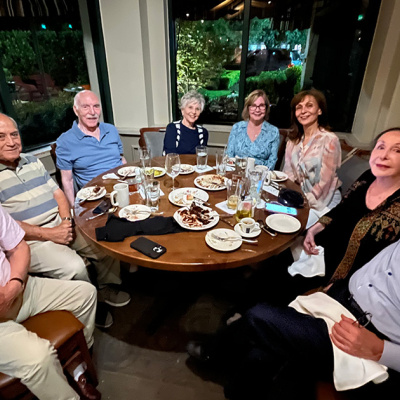"It's Not Hopeless": Kristof Busts Myths About Human Trafficking

Fatalists may think that since prostitution is the "world's oldest profession," there's no use trying to end human trafficking.
Perhaps the world's foremost spokesmen against the practice, Nicholas Kristof, says that's false—progress can be made.
A two-time Pulitzer-winning columnist for the New York Times, Kristof made a name for himself reporting on the vulnerable worldwide, from the pro-democracy movement in China to the genocide in Darfur.
But a searing 1997 trip to Cambodia opened the reporter to the reality of what he calls modern-day slavery. In one village, he saw 10- and 11-year-old girls whose virginity was being auctioned off. Later he wrote about a girl whose eye had been gouged out by a brothel owner.
"I could not believe this was happening in the modern world," Kristof told a packed house at the LBJ Auditorium on Monday. "Modern slavery is not hyperbole, not an exaggeration."
Knowing that advocates for a good cause sometimes exaggerate the scale of the problem they're working to solve—and that trafficking is a complex issue—the journalist then spent much of his lecture breaking down myths about it.
Myth: It's about poverty. Reality: The very poorest countries don't necessarily have the biggest trafficking problems. Key contributors, Kristof said, include urbanization, corrupt police, and large communities of men living away from their families to work in industries.
Myth: It's consensual. Reality: China has the largest number of prostitutes in the world, Kristof said, but sex-for-sale there tends to be more consensual. In other countries, huge amounts are coercive.
Myth: It's not a problem in the United States. If there's any prostitution or trafficking here, it mostly involves foreigners. Reality: Homegrown girls from troubled homes, often runaways, are targeted by pimps who may buy them a meal, tell them they're beautiful, and have them servicing customers within days. "These girls go missing and there's no Amber Alert," Kristof said.
Myth: The "legalize and regulate" model, like in the Netherlands, is the best way to deal with the problem. Reality: Where there is an aboveground prostitution market, an illegal underage one tends to run parallel with it, Kristof said. Sweden's model—in which pimping and buying sex are banned—is regarded as much more of an international success. The policy has discouraged johns, dropping demand and then price. Simultaneously, it has increased the risks of getting involved in the trade and reduced the financial incentive to take those risks.
Several audience members asked how they could best help fight trafficking. The best organizations and activism on it tends to be local, Kristof said. As Austin resources were called out, he repeated them: FreeAustin.org and Allies Against Slavery.
"Helping people is harder than it looks," Kristof cautioned. "You get a lot of smart people, say in Austin, who sit around a conference table and come up with ideas, and they don't always work. It's not a reason not to do it, but it is a reason to listen carefully, go step-by-step, and understand what's going on on the ground."
He added: "We need to be humble about what we know and how we can bring about change."
Kristof came as part of the Liz Carpenter Lecture Series, held for the first time under the auspices of the Plan II Honors program. The late and legendary Carpenter—a writer, humorist, and onetime aide to President Lyndon Johnson—was clear that she wanted a true humanist to lecture, Plan II director Michael Stoff said. "I think Liz Carpenter would have agreed that Nick Kristof is her kind of guy," he added.
Photo by Matt Valentine






